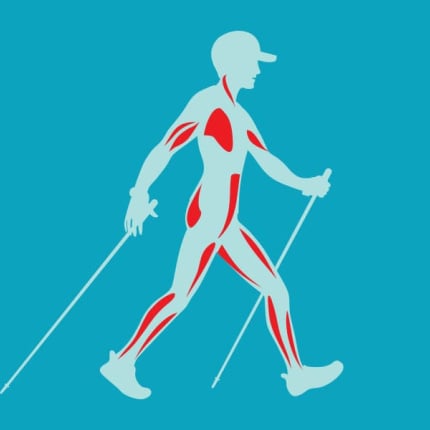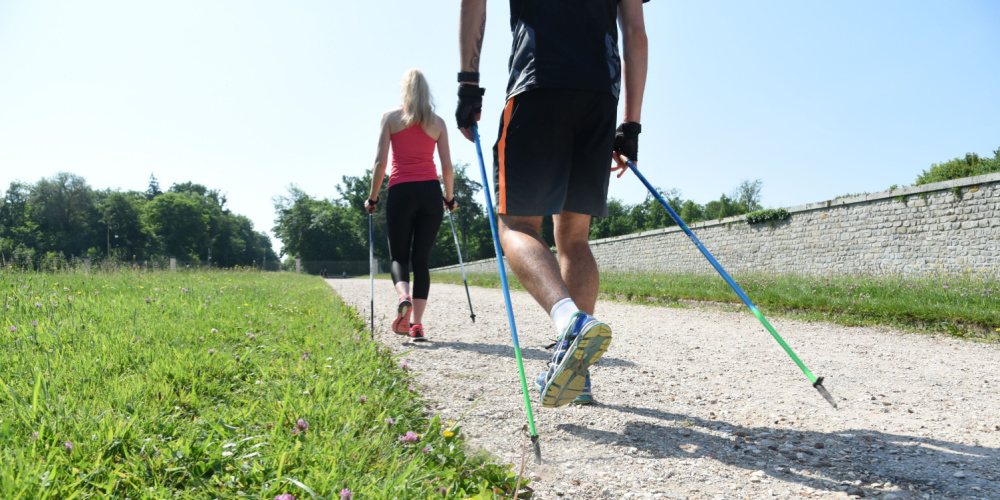
Nordic walking
90 % of muscles used
350 kcal / hr burnt

Running
70 % of muscles used
750 kcal / hr burnt

Cycling
40 % of muscles used
650 kcal / hr burnt

This sport discipline has roots in Finland and has been invented just recently. Cross-country skiers came up with it as a part of their summer trainings and it has instantly spread all over the developed world. It is basically walking with special walking poles, however the technique is crucial while it takes up to 90 % of your all muscles to be used while practising it right. And that is a lot. What are the nordic walking poles and how they differ from trekking poles?

90 % of muscles used
350 kcal / hr burnt

70 % of muscles used
750 kcal / hr burnt

40 % of muscles used
650 kcal / hr burnt
Nordic walking is a safe and highly effective way how to get in a great shape, no matter the age, sex or overall physical prowes. It is suitable for everyone throughout the year. Since it is based on walking in nature, it also has positive effects on your mind, reducing stress and pressure. Thanks to the poles, the hip joints and knees do not carry as much load as oppose to standard walking. The load is even three times lesser compared to running. That is the reason why this activity is suited even for people with back pain or with overweight.
Nordic walking poles vary from trekking poles in their handles. They resemble cross-country ski poles. In order to practise the technique right, once the pole is getting behind you, you have to release it from your fingers and hold it just by your thumb and wrist strap. In contrary, you hold the trekking poles firmly all the time. The proper length of a nordic walking pole should be 70 % of your height. The rule says, once you plant the pole to the ground, your arm should be in 90 degree angle to the pole.

Another specific attribute are the tips of the poles. The metal spikes are meant for snow and rugged terrain, the rubber pads are for paved surfaces like asphalt or stone. This rubber also absorbs the shocks that would have been transferred into your arms otherwise. Additional accessory consists of nordic walking gloves and appropriate shoes for particular terrain and clothing for specific conditions.
Nordic walking is an ideal form of physical training which is up to 50 % more efficient than standard walking. Moreover, it is gentle on your joints and musculoskeletal system.